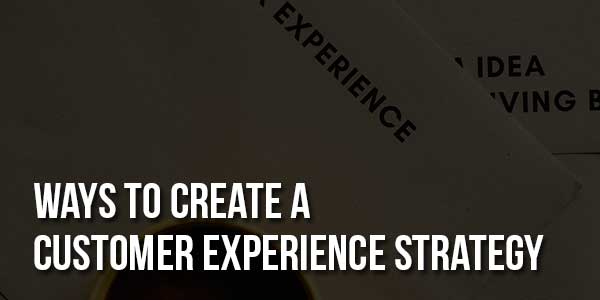
Customer Experience (CX) is quickly gaining ground as an overall design and sales philosophy. In short, this amalgam of different practices centres on the customer, as the name implies. It entails offering a stellar experience from start to finish, defining the latter as post-sale engagement as it suggests the flywheel model over the funnel model. But how does one define such a broad, holistic, and overarching philosophy narrowly enough to act on it? In other words, which are the most efficient ways to create a customer experience strategy? Let us use this article to find out.
Table of Contents
What Is Customer Experience (CX)?
Initially, a very crucial distinction must be made, starting right at the very definition. Your definition of CX will inform and drive your efforts, so we should begin here.
CX does not only refer to user experience (UX) or only to customer service – as we’ll outline below. These are merely components of CX, not the entirety of it. But still, the definition is elusive. Consider, for example, some of the different definitions that SmarterCX provides:
- “CX is how your company meets (or not) customer expectations from each interaction between the customer and your company.”
- “CX is each and every customer contact with your employees, your product, and its delivery method.”
- “CX is how customers perceive their interactions with your company and how it affects their progression through your marketing funnel.”
All of their 15 definitions differ, slightly or substantially, but they all overlap in one key regard; they span the entire customer journey, from start to finish. So, let us consolidate them all; “CX is the overall experience a customer gets, from initial discovery to post-sale engagement.”
User Experience (UX) And Customer Service As Components Of CX:
Therefore, to create a customer experience strategy, one cannot simply focus on UX or customer service. These concern specific phases of the customer journey, but not their entirety. To address this distinction in some depth, let us start with the basics and build this argument on the way.
How To Create The Basis For A Customer Experience Strategy:
For any such strategy to begin taking shape, one needs to cover 3 fundamental steps:
- Set S.M.A.R.T. goals
- Acquire deep audience and customer insights
- Engage in customer journey mapping, acting on its findings
Let us take this one by one.
#1 Set S.M.A.R.T. Goals:
This well-known acronym stands for the following:
- Specific – set goals as specific as possible
- Measurable –identify specific key performance indicators (KPIs) that measure success
- Attainable – aim for attainable goals that are within reach
- Realistic – keep goals realistic in the context of your place in the market
- Time-bound – set specific timetables for results
S.M.A.R.T. goals are by no means novel at this point and are, in fact, almost universally useful. A CX strategy is no exception to this; every strategy succeeds and fails by its goals.
#2 Acquire Deep Audience And Customer Insights:
Similarly, all such strategies hinge on deep audience insights. On this front, Customer Relationship Management (CRM) software is the most frequent asset toward obtaining such insights. Indeed, Statista notes that the CRM market continues to expand, now being the largest software market in the world.
Thus, after setting your goals, you will need to acquire deep knowledge of your audience. To do so, you may consider Hubspot or its competitors as your CRM of choice.
#3 Engage In Customer Journey Mapping (CJM):
Finally, these insights can inform customer journey mapping (CJM), in equal parts a prominent and lucrative strategy. Put simply, CJM entails creating buyer personas that personify your key audiences and then using them to follow their potential journeys across your sales funnel.
Crucially, even more so in this context, CJM identifies 4 different phases:
- Discovery phase – when a customer first discovers your proposition
- Research phase – when a customer researches alternatives
- Conversion phase – when the customer finally converts
- Post-sale engagement – when an existing customer interacts with your brand again after completing a purchase
These different phases offer an excellent basis to create a customer experience strategy around, as CX encompasses all of them.

How To Create A Customer Experience Strategy Across The Customer Journey?
Having set solid goals, identified your audiences, and mapped their journeys, you may now effectively create a customer experience strategy. As CX spans across all phases, you will need to consider different practices for each.
Alt-tag: A sketch of a hand with a pencil moving through coloured blocks of descending sizes.
#1 Discovery: Enhance Your Visibility:
First and foremost, you will need to engage in Search Engine Optimization (SEO) to enhance your visibility. Examine how your content fares in search engines, how it resonates with your audiences, and how it measures up to the competition. The very first contact with your website is where CX begins, so ensure your website adheres to SEO criteria:
- Optimal (3 seconds or less) loading speeds
- Optimized images
- Proper formatting and meta text
- Security
- Website responsiveness and ease of navigation
These and the other 200 SEO metrics all affect your search engine visibility, but also your CX. If any such shortcomings create negative touchpoints in your customer journey, make sure to address them.
#2 Research: Engage In Personalized Marketing And Retargeting:
Having ensured visibility, you may begin to address the research phase. But how can you do so if customers are not on your website? Simply by marketing to them and retargeting them as needed at opportune times.
An invaluable asset that CRM provides is audience segmentation tools. These offer many different types of segmentation that can inform marketing outreach:
- Demographic
- Psychographic
- Behavioral
- Geographic
- Technographic
- Needs-based
- Value-based
These, in tandem with interaction records, can enable deeply personalized marketing that enhances the UX and improves conversion rates. Moreover, automated email tools can facilitate outreach at optimal times, ensuring retargeting efforts succeed.
#3 Conversion: Provide An Impeccable On-page UX Through Design And Content:
On the subject of conversions, then, this is arguably the most crucial phase. Sometimes dubbed as the “decision” phase, conversions are the ultimate testament to UX.
To ensure enhanced UX in this phase, you may again refer to on-page and technical SEO best practices. Among others, consider the following:
- A clean, intuitive design; optimal web design can facilitate easier navigation and enhance UX
- A solid website structure; a visible sitemap can likewise facilitate easier navigation to pages of interest and conversion pages
- Clear, visible Call to Action (CTA) buttons; obscured, hard-to-find CTAs can hamper the UX and deter customers in the process of converting
These and other practices will guarantee that your customers find exactly what they’re looking for, with minimal effort and frustration.
#4 Post-sale Engagement: Improve Your Customer Service:
Finally, post-sale engagement is the phase that best exemplifies the shift away from the funnel model and toward the flywheel. To create a customer experience strategy means embracing the customer-first philosophy that post-sale engagement matters.
As we highlighted in the introduction, customer service is crucial in this phase. Indeed, customer service enhances the UX as it inspires brand loyalty and increases customer retention. Both of these are uniquely valuable metrics and notable benefits of UX strategies. Loyalty creates brand advocates who provide referral traffic and social credit. Customer retention enhances the customer lifetime value (CLV) and provides better marketing return on investment (ROI) – as acquiring new customers costs 5-7 times as much as retaining existing ones. In this regard, consider ResearchGate’s data on the matter, which highlights this in no uncertain terms.
To enhance your customer service, then, you may consider two main options, among others:
- Use chatbots to provide 24/7 customer service and project professionalism
- Use CRM software to let interaction records inform responses to recurring inquiries
Conclusion:
To summarize, then, there are as many ways to create a customer experience strategy as there are businesses. However, it is crucial to remember that UX entails the entire customer journey, not anyone phase alone. Thus, you may use CRM and other software to segment your audiences and inform customer journey mapping. As you follow the customer journey, these same tools will also facilitate personalized marketing and customer service, enhancing UX further. Finally, you may use SEO guidelines to enhance visibility and page conversion rates, solidifying your UX strategy across all phases.

 About the Author:
About the Author:












Be the first to write a comment.